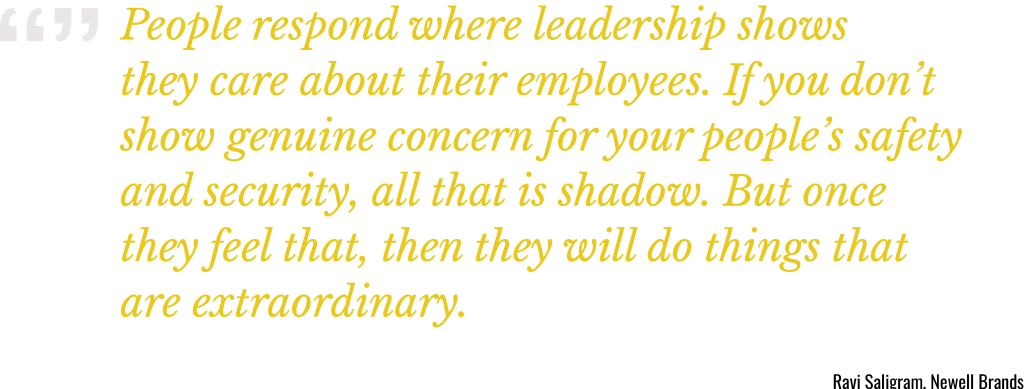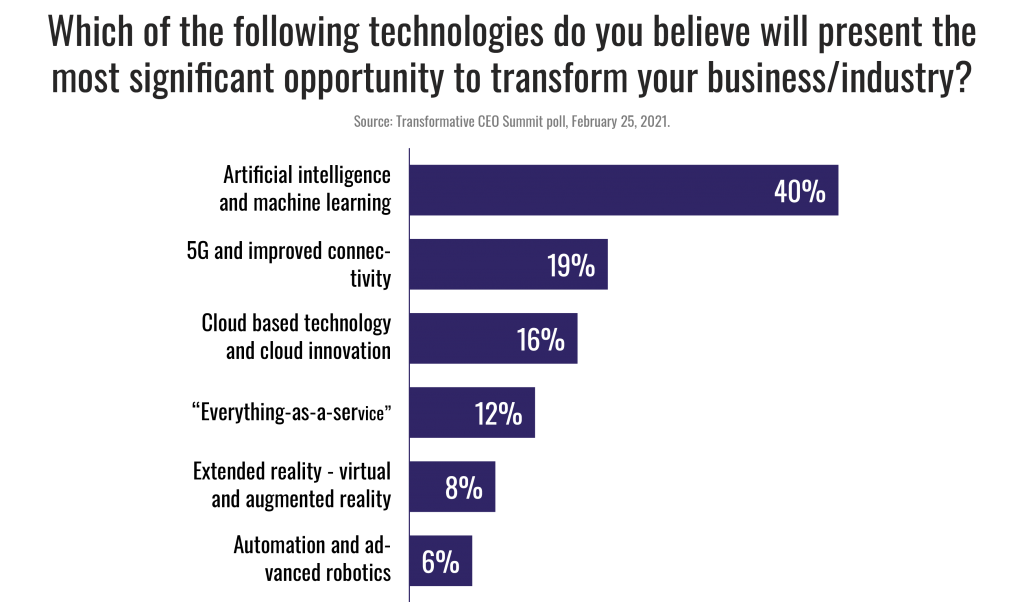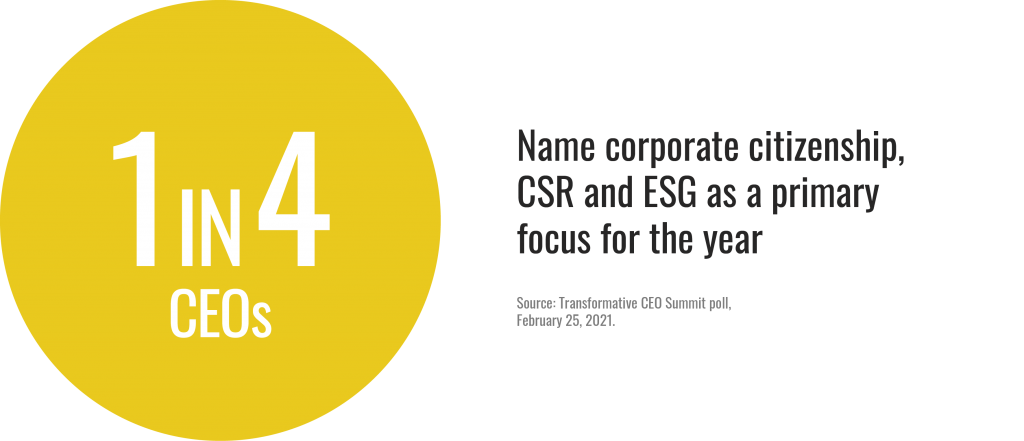Rebecca Ballard

Posted on
August 24, 2021
2 Min. Read
Author
Purple Strategies
Rory Cooper Named A Georgetown University Politics Fellow
As a GU Politics Fellow, Rory joins some of the best minds in politics, campaigns, journalism and public service to engage and educate future leaders in those fields.
Purple Partner Rory Cooper has been chosen as part of the Fall 2021 class of Georgetown University’s prestigious GU Politics Fellows Program. Through its work as part of the Institute of Politics and Public Service at GU’s McCourt School of Public Policy, the new Fellowship class aims to tackle some of the biggest political challenges of the day and give the next generation of political and government leaders insight into politics and beyond.
Throughout their term, the Fellows host weekly discussion groups for students and the broader Georgetown community to become better acquainted with the world of U.S. politics. Fellows also create student strategy teams that advise the Fellows on ways to better connect politics, government and media with the next generation, and offer students opportunities to network, build relationships, ask questions, discuss career paths and examine the latest developments in domestic and foreign policy. The program creates a space where students learn from these leaders, and the Fellows learn from students and take those insights back into their professional work.
Rory joins a prestigious list of past Fellows and a new class including:
- Charlotte Clymer: Former Press Secretary for Rapid Response, The Human Rights Campaign; Transgender activist and military veteran
- Ambassador Bob Lighthizer: US Trade Representative, Trump Administration
- Amna Nawaz: Chief Correspondent, PBS NewsHour
- Rebecca Pearcey: Political Director and Senior Advisor, Elizabeth Warren for President
- Brian Stelter: Chief Media Correspondent & Host of “Reliable Sources,” CNN
At Purple, where he was named a Partner earlier this year, Rory advises top executives and leading advocacy and reputation campaigns for some of the world’s most recognized corporations and issue-based organizations. He joined Purple after serving as communications director for House Majority Leader Eric Cantor where he advised leadership on the party’s agenda and legislative priorities. As part of the original staff in the Office for Homeland Security at the White House, Rory played a central role in the creation of the Department of Homeland Security and the development of a national homeland security strategy in the aftermath of 9/11.
Previously, Rory led communications and strategy for The Heritage Foundation, served as a senior policy advisor at the U.S. Department of Energy, and was director of legislative and intergovernmental affairs at NASA. Along the way, he’s worked on several presidential and congressional campaigns, including President Bush’s reelection efforts in 2004 and as a political staffer for the National Republican Congressional Committee.

Posted on
August 19, 2021
3 Min. Read
Author
Nate Byer
Recent Media Mergers Leave Many People Conflicted and Seeking Government Intervention
Two recent mergers between well-known media companies have renewed discussions about the impacts of entertainment consolidation on consumers. These business moves, such as AT&T’s decision to merge WarnerMedia with Discovery and Amazon’s purchase of MGM Studios, leave consumers conflicted: More than half (56%) of the Informed Public is worried about problems that may arise from too few companies owning too much media, but 7 in 10 of those same worried consumers simultaneously believe that media consolidation makes things easier or better for them by offering greater choice and content.
At this point of tension, U.S. consumers are looking to government to intervene, with about half of the public – and by a nearly 3-to-1 margin – believing political leaders should step in to protect their interests and ensure media companies don’t grow too large. For corporate and government leaders with any proximity to these sorts of transactions, this data suggests they should prepare to proactively engage with stakeholders around merger news to maintain a positive reputation as anti-trust and competitiveness become even hotter topics in Washington this fall.
Among the other findings from the Purple Strategies research:
Merger specifics do not break through crowded news cycles.
Despite a steady volume of media coverage, media mergers aren’t top of mind with the news-engaged public. Days after the AT&T merger, only 33% of respondents reported hearing the news. Despite the relatively consistent stream of news coverage, updates to the ongoing fight to control an integrated content future don’t always break through the noise, even when the impact on consumers may be significant.
The public holds mixed beliefs about the good, bad and indifferent impacts of consolidation on them, personally.
When the public does think about mergers in the media and content space, it holds a wide variety of beliefs about how those mergers will impact consumer choices. Among the informed public, 32% disagree that mergers result in better content options, 35% think mergers would lead to better choices, and 29% do not feel strongly in either direction.
Public concern about these mergers increases with greater awareness of the potential impact.
Overall, 39% of respondents think that media company mergers do not affect them much. In the case of AT&T and Amazon’s actions, the data point to a general concern about media companies becoming “too large;” what could read as ambivalence to these corporate actions may be less driven by apathy and more by a lack of overall awareness. Given context about the potential impact of mergers, people’s views shift dramatically, with 52% saying they think it would be bad for consumers if media company growth goes unchecked.
Bipartisan public permission exists for government to step in.
Nearly half of the Informed Public feels political leaders should step in to help protect the interests of consumers in such mergers, signaling a broad permission to regulate, especially in the context of anti-trust action coming from Congress. Over 50% of Democrats and nearly 50% of Republicans agree that politicians should watch media consolidation carefully, and individuals from both parties agree that too few companies owning and controlling too much media can be a problem.
Beyond entertainment, other industries including technology and finance are consolidating as well. The relatively few ripples caused by the AT&T and Amazon actions show that even major moves might not alarm the public initially, but corporate communicators can’t sit back. Anti-trust advocacy is bipartisan click bait and straight-forward narratives about the potential downside of corporate growth drive the public to want more regulation.
As with most corporate action of this kind, leaders need to commit to engaging with their stakeholders proactively, both to educate and provide them with the needed context for news when and if they encounter it. Part of that action means mobilizing around engaging regulators and elected officials. Maintaining a strong corporate reputation before, during, and after business transformation is absolutely critical to the success of these high-stakes deals.
PURPLE OMNIBUS SURVEY OF THE US INFORMED PUBLIC. N=1000. JUNE 4-7, 2021.
Purple partners with Fortune 500 companies, associations and coalitions to anticipate, navigate, and compel change. Please reach out to author Nate Byer or any member of our Purple team to let us know how we can support you.

Posted on
July 23, 2021
4 Min. Read
Author
Rebecca Ballard
If Past is Pre-Game, NHL Poised To Enjoy Boost In Public Reputation From Response To Luke Prokop’s Historic Announcement
A version of this article first appeared in Fast Company
When Nashville Predators prospect Luke Prokop made history this week becoming the first openly gay active player in the NHL, the statements of support came swiftly from the 19-year-old’s team and league. Official team Twitter accounts across the National Hockey League expressed welcome and encouragement, collected on the hashtag #HockeyIsForEveryone. Key league executives rallied around Prokop as well, including NHL Commissioner Gary Bettman and National Hockey League Players’ Association Executive Director Don Fehr, applauding Prokop’s example and bravery.
For a preview of what the broader reaction from fans and the public might mean for the NHL and its leaders, one might look no further than last month, and to new public opinion and reputation research regarding a similar announcement in the NFL.
With the news of Las Vegas Raiders defensive end Carl Nassib coming out as the first openly gay active NFL player, corporate reputation strategy firm Purple Strategies surveyed members of the U.S. Informed Public (n=1,001 adults 18+ who follow the news regularly) to learn how the announcement and official responses changed the informed public’s views of the National Football League. If what’s past is pre-game, the NHL might expect to enjoy a reputational boost from its actions surrounding Prokop’s historic moment.
In the Purple Strategies research, the NFL is seen gaining credibility with the public for proudly embracing Nassib and amplifying a message of inclusion and acceptance. Half (50%) of the informed public said the NFL’s statement and actions made them have a more favorable opinion of the NFL, and more than half (53%) said they would be proud to say they work for such an organization. For roughly two-thirds of those surveyed, the NFL’s response would spur them to take positive action on the league’s behalf, with 63% saying it would make them likely to speak positively about the NFL on social media, and 69% saying it would lead them to speak positively about the NFL to family or friends.
And these results cut across party lines for younger adults, reflecting a generation that is growing as a share of the U.S. population and broadly more supportive of sports and other organizations taking a stance on issues of inclusion and acceptance. Taking as an example the impact the NFL’s announcement had on the informed public’s likelihood to use or buy NFL products (e.g., watching games, buying merchandise), overall, the results vary widely between Democrats (75% more likely) and Republicans (44% more likely). However, for those age 18 to 34, that gap shrinks considerably (76% more likely among Democrats, 59% more likely among Republicans), leaving a meaningful majority of both parties within the younger demographic ready to take action in support of the NFL.
Nassib’s news registered widely, with almost half of the informed public being aware of the story and the conversation expanding to audiences who may not typically spend time with the sports page. The Nassib announcement earned higher awareness than many other big news stories that week, with 45% of those surveyed saying they had heard the story, and 44% associating the NFL with making a statement and taking action on the topic. High-profile figures tweeted support for Nassib including President Joe Biden, Jemele Hill, George Takei, and Billy Eichner. And LGBTQ+ media outlets like Pink News raised awareness of the NFL’s social position to a broader audience.
Although the NFL has garnered criticism for its handling of certain social issues, gay rights advocates were overwhelmingly positive in response to the latest news. LGBTQ+ organizations like Outsports and The Trevor Project tweeted gratitude to the NFL, adding credibility to the organization in the conversation. That credibility set the stage for authentic storytelling from LGBTQ+ supporters, many of whom expressed their gratitude for representation in the NFL, shared their experiences being gay and playing football, and said these actions would save lives.
By way of comparison, the NCAA also made news around the same time, but did not benefit from similar reputational uplift. The organization’s handling of recent and ongoing issues (e.g., gender and pay equity, compensating players) put the embattled organization on an increasingly descendant path with almost 4 out of 10 Americans believing the NCAA’s best days are behind it, and almost 5 out of 10 of those polled believing the organization is “part of the problem to issues facing college athletics.” Unlike the NFL and potentially now the NHL, the NCAA continues to miss opportunities to meet the moment.
An important lesson for all organizations – and not just sports organizations – is that the playing field has expanded in terms of issues and audiences that warrant careful monitoring, analysis and engagement. It’s not hard to empathize with the challenges facing institutions to overcome the fear of public criticism and manage rapidly changing expectations today, but this research points to an emerging truth: attempting to stall or reverse progress and equity – be it the acceptance of a professional athlete who is a member of the LGBTQ+ community or NCAA athletes being compensated for the use of their image and likeness – is a losing proposition.
Source: Purple Omnibus Survey of the US Informed Public. n=1001. June 25-28, 2021.
By Rebecca Ballard | Managing Director

Posted on
June 22, 2021
2 Min. Read
Author
Purple Strategies
Purple Elevates Rory Cooper to Partner
Cooper brings client expertise honed during a career in Washington spanning every professional angle, including the White House, congressional leadership, K Street, media and campaigns
Purple Strategies has elevated veteran political, policy and brand strategist Rory Cooper to partner. Rory has been a managing director at Purple since 2014, advising top executives and leading advocacy and reputation campaigns for some of the world’s most recognized corporations and issue-based organizations.
“Companies navigating incredibly high-stakes issues turn to Rory every single day because he’s been seasoned by a career at the intersection of politics, policy and reputation and has earned the role of trusted advisor to officials at the highest levels of business and government,” said Steve McMahon, Purple co-founder and CEO. “We were fortunate when Rory chose Purple seven years ago and are proud to welcome him as a partner today.”
Rory joined Purple after serving as communications director for House Majority Leader Eric Cantor where he advised leadership on the party’s agenda and legislative priorities. As part of the original staff in the Office for Homeland Security at the White House, Rory played a central role in the creation of the Department of Homeland Security and the development of a national homeland security strategy in the aftermath of 9/11.
Previously, Rory led communications and strategy for The Heritage Foundation, served as a senior policy advisor at the U.S. Department of Energy, and was director of legislative and intergovernmental affairs at NASA. Along the way, he’s worked on several presidential and congressional campaigns, including President Bush’s reelection efforts in 2004 and as a political staffer for the National Republican Congressional Committee.
“Rory has been there,” said Alex Castellanos, Purple co-founder and chairman. “Whether you are in a war room, fighting to protect your company’s license to operate, or renewing a brand that’s been pushed into the past, Rory Cooper is the guy you want taking you into the future. We are glad he is leading our clients and now, as a partner, leading Purple.”
A graduate of Tulane University, Rory lives in Virginia with his wife, Emily, and their three children.
“Since I’ve joined Purple, I’ve had the extraordinary honor to work with some of the sharpest minds in brands and advocacy,” Rory said. “It’s a joy to work with my colleagues to help our clients navigate issues and business and reputation challenges. I’m humbled by the clients we get to work with and the trust they place in our team.”
In addition to Steve McMahon and Alex Castellanos, Cooper joins a partnership that includes Kristen Morgante, the firm’s Chief Operating Officer; Jillayne Smyth Rogers, Chief Creative Officer; Mark Squier; John Gatti; and Chris Durlak.

Posted on
May 12, 2021
2 Min. Read
Author
Purple Strategies
Corporate and Public Affairs Insights Leader Nick Driver Joins Purple
Purple Strategies has added Nick Driver to our growing insights function as a research director. Nick joins Purple from Hill+Knowlton Strategies, where he most recently led the agency’s U.S. research team and worked with the agency’s leadership to integrate and scale Data+Analytics services across the agency’s global network.
“Our need for deep insights has never been greater than this past year as we worked with clients to navigate the significant changes and complex issues that have emerged, and Nick’s extensive expertise in public opinion polling and counseling corporations through difficult times makes him a strong addition to our team,” said Steve McMahon, Purple co-founder and CEO.
Nick started his career at Public Strategies Inc., a public affairs firm based in Washington, D.C., and Austin, Texas, fielding opinion research and generating insights that helped shape large corporate campaigns for clients. His work covered everything from state-wide ballot initiatives to product recalls, energy issues, financial crises, mergers and acquisitions, and many other reputational challenges for diverse sectors that include healthcare, retail, finance, food and beverage, and digital entertainment.
After Public Strategies merged with WPP’s Hill+Knowlton in 2011, Nick spent a decade with the firm working across the U.S. and globally. He first went to Los Angeles to grow the research practice on the West Coast, then led the U.S. research team and efforts nationally, finally taking on an expanded remit to build Data+Analytics services and products to be scaled internationally across the global Hill+Knowlton Strategies network.
“Coming to Purple brings me back to my roots of using research to inform strategy for high-stakes reputation campaigns that create significant business impact,” Nick said. “That has never been more important than it is in today’s business climate, and Purple’s commitment to using insights to drive strategy is extraordinary, so it’s a really exciting time to be joining the firm.”
Nick graduated from Texas State University, where he earned BA and MA degrees in Communication Studies.

Posted on
May 7, 2021
5 Min. Read
Author
Rebecca Ballard
Working Moms and Corporate Reputation: Struggle, Solidarity and Opportunity
More than a year into shouldering the mounting effects of a global pandemic, moms in the workforce hoping to find celebratory spring flowers are instead in for bouquets of more bad news. From more than 2.3 million women dropping out of the labor force, to moms taking on a “double shift” of housework and caregiving alongside day jobs to keep families afloat, to predictions it will take decades to recover women’s lost wages from the pandemic (to say nothing of the generations now needed to get to pay equity), to outcomes that are even worse for Black women, research continues to paint a dire picture for working moms.
Companies, however, are in a position to deliver hopeful news to working moms, according to new Purple Strategies polling. Our latest research views that picture through the lens of corporate reputation. It investigates employee experiences of both parents and non-parents during the pandemic and the expectations workers have now for companies, and it points to ways businesses and leaders can be part of solutions to the challenges working moms face, helping all of their employees in the process.
What We See
Working through a global pandemic has been hard on all employees, but working moms have experienced certain negative impacts to a greater degree than others.
Working moms are experiencing less help and feeling less supported by their companies than dads are, despite the fact 7 in 10 moms report being the adult primarily responsible for their kids’ virtual learning.
- 39% of moms say their employer has done a lot to help accommodate their need to manage at-home learning or loss of childcare during the pandemic, compared with nearly half of dads (48%)
- Moms report at rates 6 to 7 points lower than dads being offered benefits by their employer as a parent trying to manage at-home learning during the pandemic, like additional paid time off, bonus/short-term payments to help with childcare, and providing a long-term childcare solution – benefits desired equally by moms and dads
- 54% of moms, compared with 68% of dads, feel like their company leadership is trying to accommodate what they are facing with childcare/family obligations during COVID-19
- 61% of moms, compared with 73% of dads, feel like their manager/supervisor is trying to accommodate what they are facing with childcare/family obligations during COVID-19
Working moms also say they have had to consider or take action on a range of steps as a result of work/life pressures brought on by the pandemic, at rates notably higher than non-parents.
- 35% of moms have reduced their work hours, compared with 13% of non-parents (an additional 29% of moms have considered it)
- 23% of moms have left their company/employer, compared with 13% of non-parents (an additional 27% of moms have considered it)
- 26% of moms have changed careers or jobs to one that would be easier to balance, compared with 10% of non-parents (an additional 25% of moms have considered it)
Non-parents might not be seeing the extent of some of the damage being done to working moms, and yet they are very supportive of what companies are doing to support parents right now.
The impacts of the pandemic on women’s careers might not be as visible to non-parents within their organizations as they are to those most affected. While about one-third of non-parents say that women in their organizations have left or taken on less challenging work assignments while they are trying to balance work and childcare, one-half of parents report seeing this within their own workplaces.
However, in terms of flexibility and benefits being offered to parents during this unprecedented time, non-parents’ views are supportive and right in line with those of parents.
- 7 in 10 employees (68% of non-parents, 70% of parents) agree that employers should play a significant role in helping their employees who are parents, accommodating their need to manage at-home learning or loss of childcare as a result of the pandemic
- 7 in 10 employees (69% of non-parents, 71% of parents) agree that employers who are offering more flexibility to working parents during COVID-19 are doing what is right for their employees and for society during this unprecedented time
What It Means
A company has meaningful opportunity in this moment to build a reputation as an employer of choice, not just for working moms but for all employees.
There’s a cautionary narrative that is sometimes presented in employee engagement that says supporting one group of employees too much can alienate another group, and vice versa; this played out in a different way in this research.
When asked to consider how their employer’s handling of their personal work situation during the pandemic would impact their likelihood of taking certain actions – like continuing to work with that employer, recommending the company to others, speaking on the employer’s behalf if it were criticized or under pressure, or rating the company’s reputation favorably – parents’ experiences with their employers made them more likely to take these actions than non-parents. But there was no opposite reaction for non-parents – no meaningful difference between parents and non-parents reporting they were less likely to take those actions. The attention shown to the unique work situations of parents had a positive impact on key employee engagement numbers for those employees, without harming those measures for non-parents.
Similarly, the data shows that what companies are doing right now to support and retain women during this time has a distinctly positive impact on the willingness of parents (66%) and non-parents (56%) alike to work at, buy from or do business with that company (with no meaningful difference between the groups to the opposite effect).
What Companies Can Do About It
To leverage these insights, companies could consider three areas of focused action:
(1) Ensure empathy is front and center in your planning for parents and non-parents alike.
When Purple gathered with 50+ CEOs from across industries recently to reflect on learnings they will take into the era beyond COVID, one that stood out was their belief that we’re entering a new era of empathy. Your employees have all been through hell, with moms’ version tending to burn a bit hotter than others. Given a list of words to describe how they’ve been feeling during the pandemic, non-parents’ and working moms’ “top five” lists shared stressed, anxious, depressed, and overwhelmed – the one difference was bored for non-parents and burned out for moms. Listen to all employees’ needs, and then support them accordingly. Invest in mental health and well-being, set realistic performance expectations, and manage toward sustainable workloads.
(2) Maintain momentum on benefits for caregivers.
This new data shows that investments in these areas drive loyalty and advocacy of parents, with no downside among non-parents, so leverage this opportunity to help caregivers, differentiate from competitors, and build up your employment brand. The top five benefits parents in this survey cited as those that would be most helpful to them in balancing work and parenting responsibilities were a flexible work schedule (46%), additional paid time off (35%), bonus or short-term payments to help with childcare (26%), assurance that having children present is not going to harm my career or professional image (26%), and providing access to short-term or drop-in childcare facilities (24%). Ask your employees, through surveys or conversations, what would be most helpful for them.
(3) Constantly counteract the forces taking women from your workforce and leadership pipeline.
The challenges around keeping women in the workforce and boardrooms during this time are one of the central issues corporate leaders are grappling with in this second year of COVID response. Across these groups in this research, 6 in 10 agree the disappearance of women from the workforce during COVID is a significant problem for the number of women in management and leadership now and in the years to come. Steps around empathy and caregiver support above are a great place to start as part of a broader commitment to maintain focus on these issues for the long term.
Source: Purple Pulse Survey of the US Informed Public. N=1,092. March 5-9, 2021.
Purple is actively partnering with companies and industries to navigate the ever-changing COVID-19 pandemic and prepare for the future that will come after, bringing deep experience helping the world’s best-known companies navigate the world’s toughest challenges. Please reach out to author Rebecca Ballard or any member of our Purple team to let us know how we can support you.
By Rebecca Ballard | Managing Director | rebecca.ballard@purplestrategies.com

Posted on
May 5, 2021
2 Min. Read
Author
Purple Strategies
DCCC Alum Cole Leiter Joins Purple
Having most recently served as Communications Director for the Democratic Congressional Campaign Committee (DCCC) during the 2020 election cycle and on the DCCC team that flipped the U.S. House in 2018, political communications and campaign strategist Cole Leiter has joined Purple Strategies as a director.
“The world’s most influential brands and corporate executives are increasingly expected to lead on issues and influence public debate in ways that may be new to them but are central to successful political campaigns. That is why Purple has always grounded our approach in political campaigns and why the campaign experience Cole brings to our team is such a valuable and in-demand asset,” said Steve McMahon, Purple co-founder and CEO. “From day one, Cole is making a difference for our clients and we’re happy to have him on our team.”
Working on and with federal campaigns from Florida to Texas to Maine, Cole brings valuable perspective on how campaigns, organizations and brands must work to intentionally connect with diverse audiences as they undergo massive demographic and behavioral shifts. He is experienced training principals to communicate their stories, with a focus on humanizing data-driven messages that persuade targeted audiences through personal narrative.
“Our world is changing rapidly and businesses that intentionally adapt to meet challenges and evolve with their customers are smartly positioning themselves for the long haul. The team here at Purple is unrivaled in their ability to help businesses identify and engage with that change. I look forward to bringing the same focus on authentic storytelling to our clients that I emphasized for the campaigns and teams I partnered with in Democratic politics,” Cole said.
Cole’s arrival continues to deepen the firm’s “Purple” political roots that bring a mix of “red” and “blue” perspectives to corporate challenges. Other political and campaign veterans who’ve joined Purple in recent months have included Jordan Davis, a Hill veteran most recently senior advisor to the House Energy & Commerce Committee and policy director and communications advisor at the National Republican Congressional Committee (NRCC); Jen Kohl, previously communications director for President Obama’s successful re-election campaign in Virginia as well as a Hill veteran; Jordan Jackson, previously with the Congressional Black Caucus PAC and Institute; Justin McCorvey, previously a legal fellow with the U.S. House; and Kayla Johnson, most recently a state digital director for the Biden for President campaign.
A native of Raleigh, North Carolina, Cole graduated from Williams College with a B.A. in Political Economy.

Posted on
April 13, 2021
7 Min. Read
Author
Purple Strategies
CEOs Pivot from Health Crisis to Human Connection
5 Themes from The CEO Forum’s First Transformative CEO Summit
Purple Strategies is the thought leadership and polling partner of The CEO Forum Group and Transformative CEO Summit. The CEO Forum convened its inaugural Transformative CEO Summit on February 25, 2021, featuring more than 50 CEOs of leading companies discussing creative ways to solve today’s most pressing challenges. This article first appeared in the digital magazine of the inaugural Summit.
When the CEOs of more than 50 leading companies gathered for the first-ever Transformative CEO Summit to suggest and debate creative approaches to addressing today’s most pressing challenges, the anniversary of the start of the COVID era was near.
And while the pandemic didn’t have a slot on the Summit agenda, its lessons and legacy wove through the keynotes and discussions as a strong and distinctive thread: The importance and resurgence of human connection emerged from transformative CEOs as the unifying lens through which these leaders reflect on the unprecedented events of the past year and look ahead with optimism and renewed purpose.
In a year when “success” required the world to avoid close physical contact and to shift to a digital-first posture, our shared experience characterized by the lack of human connection crystallized for CEOs the myriad ways human connection can be differentiating for a company as we enter this next era. Whether discussing technology, finance, corporate citizenship or any other topic, the CEOs repeatedly surfaced an array of elements of human connection as being critical to advancing the goals of their organizations and meeting their obligations to society – as individuals and as corporations.
The following forces related to connection are ones transformative CEOs recognize as shaping the business landscape at this moment.
(1) A new era of empathy.
Business leaders across industries recognized that COVID has ushered in a new era of empathy, in which business itself must play a central role in prioritizing the physical and emotional wellbeing of all stakeholders – employees, customers, partners, suppliers, and the communities in which they operate. As companies look to re-open and in some cases reinvent their industries, leaders will be particularly attuned to the safety and security of their employees, for whom continued corporate empathy will be integral to their business success and driving toward strong reputation outcomes, including trust and talent recruitment/retention.

(2) The promise of a deeper, more human embrace of tech.
COVID significantly impacted businesses’ reliance on technology, as many were forced to adopt or accelerate their adoption of digital solutions in order to compete, or even simply survive. Recognizing that rapid technological change is never without disruptions, industry is now looking to the convergence of the physical and digital world – the “phygital” space – to combine technology with human intellect and drive competitive advantage and continued business transformation.

(3) An inflection point for Purpose.
While corporate America has signaled its intention to move beyond shareholder primacy and instead serve a broader mix of stakeholders, COVID accelerated the need for businesses to translate Purpose into action. Companies that responded to the moment adopted flexible work-from-home policies, found ways to support single parents and those struggling with childcare, offered discounts and deals to offset the financial strain many were feeling, and prioritized employee health and safety. As they move beyond this moment, leaders stressed the importance of continuing their commitment to serving a full coalition of stakeholders and defining their Purpose through action.

(4) Urgent acceleration of focus on diversity, equity and inclusion.
The recent and overdue reckonings around racial justice and gender inequality forced companies to look in the mirror and across the boardroom to evaluate whether their stated corporate values matched their business realities. The lack of diversity among the CEO population itself is an important reminder of the significant gap between the two. Transformative leaders are resolved that the private sector must shift away from talking points in favor of tangible action to address inequalities across industry sectors (and particularly in finance, healthcare, education and tech); bring about greater representation and diversity in the executive ranks and boardrooms; and charge every employee in moving companies in a positive direction.
(5) A new and enduring legacy of crisis preparedness.
The ongoing global pandemic delivered a wake-up call to corporate leaders that this type of event can and will come again, and the organizations that will survive in the long-term are those that are already preparing for the next crisis event. While society more generally might yearn for a “return to normal” there is little room among executives for nostalgia to go back to the way things were before. Transformative leaders are approaching decision-making and forecasting with the lens of when not if. Proactively preparing for the inevitable next global catastrophe will demand that companies assume a culture of innovation and a willingness to adapt that will be key to their survival.

Leaders at the Transformative CEO Summit helmed their companies through an unprecedented crisis that upended the business world (not to mention every facet of society), and convinced them of the certainty of crises to come. Despite this, many of these leaders expressed a sense of optimism – optimism in their ability to reinvent their industries and play a role in rebooting society in the wake of massive disruption, and optimism in their ability to confront and navigate future challenges. For proof and inspiration, leaders pointed to previously unseen cross-industry collaboration, technological adoption, agility in decision-making, and building a culture of “yes” – in some cases overnight – to adapt to this disruption.
They revisited their values; prioritized corporate citizenship, diversity, and inclusion; and challenged themselves to manifest Purpose through action, for all of their stakeholders. CEOs hope to enshrine the lessons learned over the last year, along with greater appreciation of human connection, through their leadership well beyond COVID.
Purple Strategies is the thought leadership and polling partner of The CEO Forum Group and Transformative CEO Summit. Purple formed 12 years ago when two political firms that were asked regularly to partner together to bring a mix of “Red” and “Blue” perspectives to corporate challenges decided to join forces. Through the years Purple has continued to evolve, bringing in diverse perspectives across a multitude of disciplines. Today, Purple is an independent, fully integrated corporate reputation strategy firm, inspired by politics, driven by data and insights, partnering with clients around the world to anticipate, navigate, and compel change. Purple blends the creativity of brand communications and the speed and strategy of political campaigns to serve Fortune 500 companies, coalitions, associations, non-profits, and some of the most recognizable brands in the world.

Posted on
March 25, 2021
4 Min. Read
Author
Lindsay Christel
Managing Corporate Reputation on TikTok
While it may feel as if TikTok appeared overnight at the beginning of the pandemic, the video-first app has been rapidly growing since its release in 2016. In the United States alone, the app has seen an astounding 800% increase in monthly-active users from January 2018 to August 2020.
As more and more users flock to TikTok, brands are beginning to find success in marketing through the platform. But when it comes to driving and protecting brand reputation, teams are scrambling to navigate the TikTok rules of engagement.
There are certainly positive and productive ways to insert your brand into a viral TikTok challenge or use the platform to drive brand reputation, but what happens when your company becomes the face of negative backlash spreading like wildfire and reaching millions? Many teams are caught flatfooted with little knowledge of the app’s capabilities and no plan of action to put out the fire. But that doesn’t have to be your brand’s story.
We’ve unpacked three important takeaways for brands to consider when scenario planning and responding to reputation issues related to TikTok.
(1) Issue lifespans are unpredictable because time is meaningless on TikTok.
While time is a major factor for algorithms on Facebook, Instagram, and Twitter, TikTok algorithms are mostly based on user interaction and preference. Therefore, users dictate the lifespan of an issue and it only dissipates when its relevancy among users drops.
In addition, videos on TikTok don’t show timestamps, which means that even videos that are months-old can be served to users and suddenly go viral without warning. Research from the University of Illinois at Urbana Champaign indicates that social media users treat older content on social media differently, with anything more than two days old being less likely to generate engagement. TikTok’s veiling of original posting date shifts the rules of engagement, allowing something that would have been a fleeting trend on another platform to sustain and build through longer engagement periods on TikTok.
The sheer volume of content on TikTok creates new trends every hour of every day, so potential issues could also go as quickly as they came. It’s all up to the users.
Consideration for reputation leaders
- To get ahead of potential issues, include TikTok as part of your communications scenario planning and monitoring protocol. Because existing tools are unable to monitor and share alerts for topics on TikTok, it’s critical to regularly explore the app for potential issues. Evaluate now if your brand should create a TikTok account for response and engagement before an issue arises, so you’re better equipped to act swiftly.
(2) Misinformation is rampant, but community checks and balances exist.
Content on TikTok ranges from celebrity gossip to health to politics to sports and everything in between; videos can be silly and playful or serious and impactful. But similar to its peer apps, one thing TikTok is not immune from is mis- and disinformation. And while there are minimal formal guardrails to prevent the spread of falsehoods, defenders of science and truth can often be found in the comments section.
Scientific vigilantes take information they hear or see and conduct their own research to confirm or refute the content. For example, when product ingredients are under fire, they scour the web for legitimate sources and share what they’ve learned in the comments section, sometimes coming to the defense of specific brands, but more often fighting for the sake of valid science. Healthcare professionals are especially vocal in combatting falsehoods and sharing their knowledge. Those credible scientific voices can go a long way to change the narrative and have the potential to be invaluable assets to brands if the situation warrants.
Similar to other platforms attempting to combat misinformation, TikTok has recently added a warning when users click to share “unverified” content. Users will still be able to share the video, but the platform is hoping to encourage an extra pause for consideration before sharing.
Consideration for reputation leaders
- Identify credible voices on the platform who can speak on your behalf and set them up for success (i.e., through offering trainings or providing messaging materials). In addition, make sure your counter-narrative is discoverable for those conducting their own off-platform research.
(3) What happens on TikTok, doesn’t usually stay on TikTok.
There is power in TikTok’s community, and that power spreads easily. It has been harnessed to spread public health information, raise money for good causes, or even “sell out” a Trump rally. In our increasingly digital world, the content that’s shared on TikTok quickly finds its way onto Instagram, Twitter, headlines and even the nightly news. Keep in mind that as the platform changes, so does the audience.
It may be tempting to disregard TikTok because it’s “just for kids” or only produces “silly viral trends,” but that mindset could be potentially detrimental for your brand or product. Not only is the power of the TikTok community stronger and more diverse than many people think, but its tendency to jump off-platform alone is reason alone to prioritize it in your company’s reputation management planning.
Consideration for reputation leaders
- As TikTok issues arise, your action plan should reflect on- and off-platform responses. Consider what your audiences might come across in their Google searches. Will they be met by ads from trial attorneys and critical organizations, or will they be met with useful and authentic content from your website? Create a holding statement and prepare a spokesperson for instances when the issue spreads to news headlines and evening broadcasts. Prioritize an always-on approach through programmatic with critical segments. Take these TikTok issues seriously and prepare accordingly.
Purple partners with Fortune 500 companies, associations and coalitions to anticipate, navigate, and compel change. Please reach out to author Lindsay Christel or any member of our Purple team to let us know how we can support you.

Posted on
March 19, 2021
5 Min. Read
Author
Purple Strategies
5 Minutes With The Women Leading Purple
We grabbed five minutes with four executives leading critical segments of the business and people at Purple: the heads of our world-class creative and insights teams (Jillayne Rogers and Denise Brien), our executive and logistics function (Zibby Logie), and the firm as a whole (Kristen Morgante). And we asked them to share perspectives and thinking in honor of Women’s History Month. Here they reflect on the women who’ve inspired them, the best or worst leadership advice they’ve received, actions they think organizations could take to enhance their pipeline of women leaders, and more.
More on Kristen
More on Jillayne
More on Denise
 AI and Paradigm Shifts on the Minds of Healthcare CEOs
AI and Paradigm Shifts on the Minds of Healthcare CEOs  Purple Strategies Elevates Three To Partnership Group
Purple Strategies Elevates Three To Partnership Group 